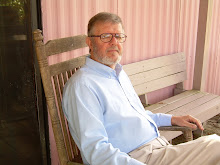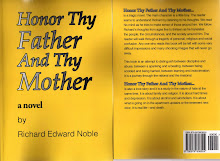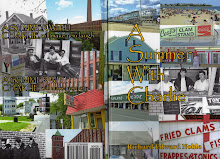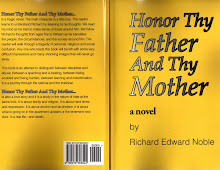“Kids on Strike”
Written by Susan Champbell Bartoletti
Book Review
By Richard E. Noble
This is a book about the travails of boys and girls in the labor force in America. It starts in the 1800’s with the early beginnings of the American industrial revolution.
We begin this harrowing journey in Lowell, Massachusetts in the Textile mills. Lowell was the first large-scale industrial center designed for the purpose. I imagine that my hometown of Lawrence, Mass was the next.
I know that neither of them was the first textile manufacturing community but they were the first communities “planned” specifically for that purpose.
We follow child laborers from the textile mills, to the streets as Messengers, Bootblacks, and Newsies; then as rent strikers and coal miners and breaker boys and into the garment industry and then back to Lawrence and the “Bread and Roses Strike of 1912”.
We touch on black children picking cotton and hit briefly on the migrant kids in the fields and the orchards.
It is pretty rugged stuff but certainly not as rugged as it must have been for those poor children living through this period of American history.
Sadly much of this history has been put aside in the United States. It seems that talking about working people and their hardships in America is un-American - even Communist.
This book points out the part that children have played in the construction of the middle class in America. It is a very interesting perspective. And it tells a story that can’t be denied or trivialized. This stuff all happened and it happened to children. It is a sad story. It is another sad story in a long line of American tragedies.
Near the end of this book the author places “A Timeline of Federal Child Labor Laws”. This Timeline is also interesting. I will synopsize it here because it makes a huge point that deserves emphasis and repeating.
In 1916 and 1919 the first child labor laws were passed and signed into law by Woodrow Wilson. Fourteen is decided upon as the minimum age for a child to work in an industry and not more than eight hours in any one day. Children who work in the street trades or in agriculture are exempted and not protected under this legislation.
In 1918 and 1922 these minimal provisions for the protection of children were declared to be unconstitutional.
In 1924 an amendment to protect children in the workplace is proposed. It is rejected and not ratified.
In 1929 and 1933 children are being used in place of adults in American industries at cheaper wages. The National Child Labor Committee lobbies the government with the suggestion that a minimum working age for children will keep kids in school and make jobs available for adults.
The author does not say whether this tactic was successful or not, but I imagine that it was not.
In April and May 1933 there was a series of children’s strikes in Pennsylvania. (I have no doubt that there were similar strikes elsewhere also.)
In May 1933 these striking children win pay increases and minimum wage laws - for children.
In 1935 these pay increase and minimum wage laws for children are declared unconstitutional.
In 1938 The Fair Labor Standards Act prohibits the employment of children under fourteen and under sixteen while school is in session. This law has other minimum wage provisions and hazardous work considerations.
The author does not say that these laws have been declared unconstitutional as of yet - but I have no doubt that someone out there is working on it. You can bet on that. It may even be that these laws have already been “adjusted”.
The Supreme Court has a rather interesting history. It supported injustice when it came to slavery; it supported injustice when it came to Native Americans; it supported injustice when it came to children in the labor force; it supported injustice when it came to adults in the work place; it supported injustice in regard to contract rights; it supported injustice in regard to the rights of women; it supported injustice when it came to the rights of states; it supports injustice in its established Military; it supported injustice in establishing the voting franchise - it seems that the only time it supports justice is when it is dealing with an issue that the court of public opinion demands justice.
It does seem to me that over the decades it has been more important what the American people think than what the Supreme Court thinks. If the vast majority of the American people think opposite to the Supreme Court you can be sure that the Supreme Court will change its mind.
skip to main |
skip to sidebar


G.E. Nordell's List of Labor History books
Search This Blog
Popular Posts
-
Bea’s Sandwich Shop Lawrence, Mass - My Hometown By Richard E. Noble Bea’s sandwich shop was a big memory for those of us...
-
John Pierpont Morgan 1837- 1913 By Richard E. Noble “Morgan the Magnificent - If ever there thrived a money potentate whose fortune was p...
-
Jews, God and History By Max I. Dimont Book Review By Richard Edward Noble Max I. Dimont is an ex-shoe salesman and unskilled la...
-
Social Security Commentary By Richard E. Noble The original Social Security legislation was passed in 1935. It covered employees w...
-
IF I WERE A BUTTERFLY By Richard E. Noble If I were a butterfly, I could flap my wings, and fly from flower to flower... Hour... upon hour ....
-
The Hobo Philosopher Rice Cakes – Yummy, Yummy. By Richard E. Noble My wife, over the past 30 years, has probably been on every di...
-
Politically Incorrect Humor/Commentary By Richard E. Noble Obviously, I grew up in the age of political incorrectness. Clearly I was raised ...
-
The Eastpointer Why do mullet jump? By Richard E. Noble Mullet has been a staple of life for decades here in Franklin County. Most other pl...
-
Lawrence – My Hometown Lennie’s on the Turnpike Richard E. Noble Being a jazz buff from early on my favorite nightspot was Lennie’s on the T...
-
Lawrence - My Hometown The Den Rock Drive-in By Richard E. Noble The Den Rock drive-in was on route 114 before the Den restaurant and pa...
Hobo Notes
Licensed book sellers and distributors - buy my books wholesale
Books by Richard Edward Noble. Click on covers below for more info and purchasing instructions.
Bloggin' Be My Life
It's All About Love
A Little Something
Bits and Pieces
A Baker's Dozen
Cat Point - and Them Dang Oyster People
The Eastpointer
A Summer with Charlie - Lawrence
Hobo-ing America
"Just Hangin' Out Ma"
That Old Gang of Mine
Come On-A My House
Standing on the Corner is # 6 in the lawrence My Hometown series.
Honor Thy Father and Thy Mother
Noble Notes on Famous Folks
Mein Kampf - An Analysis of Book One
America on Strike
Talk Radio - Lawrence, Ma. WCCM
Richard Edward Noble

About Me

- Richard Edward Noble
- MY NAME IS RICHARD EDWARD NOBLE. I AM A FREELANCE WRITER AND I HAVE PUBLISHED 12 BOOKS:"THE EASTPOINTER" - SELECTIONS FROM AWARD WINNING NEWSPAPER COLUMN - "A LITTLE SOMETHING" - POETRY WITH PROSE -"HONOR THY FATHER AND THY MOTHER" - A NOVEL ABOUT GROWING UP IN THE NEW ENGLAND MILL TOWN OF LAWRENCE, MASS, "HOBO-ING AMERICA" - A WORKINGMAN'S TOUR OF THE U.S.A. - "A SUMMER WITH CHARLIE" - THE STORY OF A YOUNG SAILOR'S LAST DAYS AT SALISBURY BEACH, "NOBLE NOTES ON FAMOUS FOLKS" - HUMOROUS ANECDOTES ON FAMOUS FOLKS IN HISTORY, "AMERICA ON STRIKE" HISTORY BOOK - A SURVEY OF LABOR STRIKES IN AMERICA; "A BAKER'S DOZEN" A BOOK OF HUMOROUS SHORT STORIES; "JUST HANGIN' OUT, MA" - GROWING UP IN THE 40'S, 50'S AND 60'S IN LAWRENCE, MY HOMETOWN, "TENEMENT DWELLERS" - SEQUEL TO JUST HANGIN OUT, MA; MEIN KAMPF - ANALYSIS OF BOOK ONE - HISTORY. CAT POINT - AND THEM DANG OYSTER PEOPLE - SEQUEL TO THE EASTPOINTER All 12 BOOKS ARE AVAILABLE ON AMAZON.COM, BARNES AND NOBLE AND OTHER INTERNET SOURCES OR FROM NOBLE PUBLISHING. ALL 12 OF MY BOOKS ARE NOW ON KINDLE AT BARGAIN PRICES TOO. IF YOU WOULD LIKE MORE INFORMATION ABOUT DISCOUNTS AND SPECIAL OFFERS E-MAIL ME. MY EMAIL IS ON MY PROFILE PAGE.
Robert Reich
Come Home America
Darcia Helle - "No Justice"
25 GreatThinkers Everybody Should Read
Followers
Writer's journal
My Blog List
Blog Archive
-
▼
2007
(111)
-
▼
December
(14)
- The Dumbest Generation
- Mein KampfChapter 11 Part 1By Richard E. NobleWe a...
- After the Beep
- A Skeptic's Faith
- Newspaper Man
- The Roosevelt War Years
- Cheer Up, It's Christmas
- Saint Augustine
- Fall Is Here
- Annoyance Stores
- General Smedley Darlington Butler
- Christopher Simpson - Blowback
- Imported Seafood
- Kids On Strike
-
▼
December
(14)




































